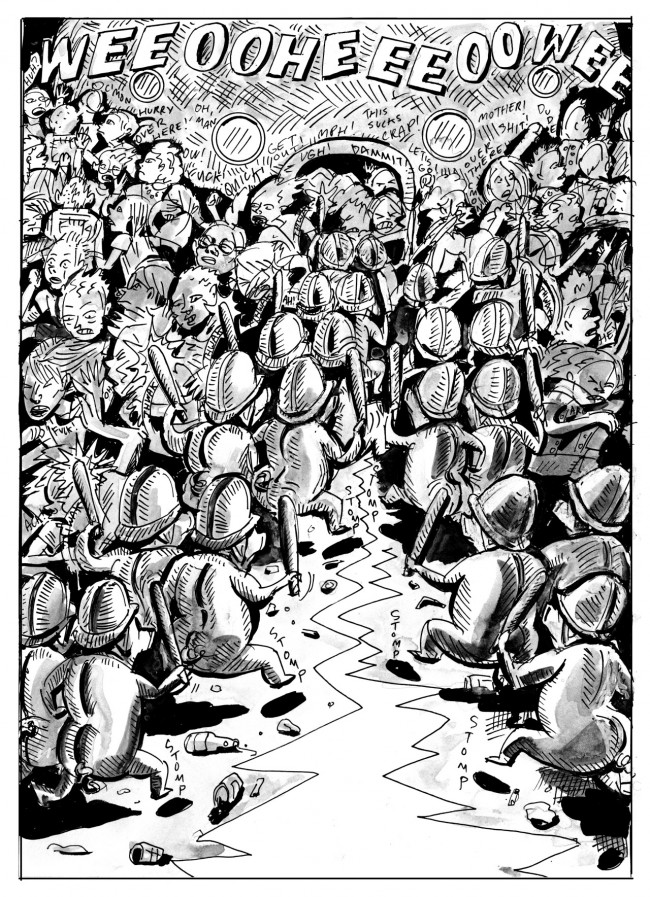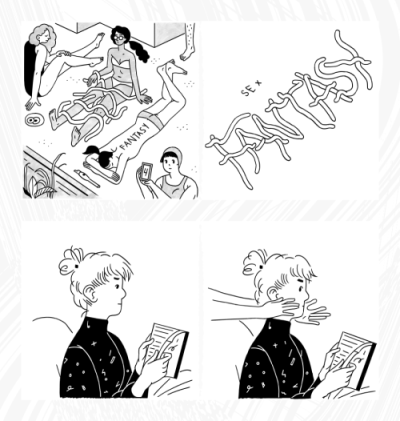Archive for December 31, 2014
“The Wire” Wednesdays, Part Four: “Your Way—It Won’t Work”
December 31, 2014Along with leftovers and late-arriving relatives, The Wire in HD showed up the day after Christmas, in all its cable-marathonable, HBOGo-bingeable glory. And despite its debut being the impetus and inspiration of this column, I really hadn’t planned on talking about it at all. The high-def remastering is one thing, a fine thing, and a legion of cinephiles could, and no doubt have, walk any interested reader through notable changes screenshot comparison by screenshot comparison. But the new aspect ratio — a flatscreen-friendly 16:9 for a show shot in good old-fashioned boob-tube 4:3 — brought out the McNulty in me. I had to fuckin’ say something.
It turns out that The Wire expanded for widescreen screens looks exactly as bad as widescreen films look cropped for square screens. You are very clearly seeing a stretched-out fraction of the original image, and it looks wrong. I kept instinctively searching for a remote control to resize the picture. Sure, David Simon helped supervise the reformatting, so it’s unlikely you’ll suddenly see lighting rigs and crew members cluttering up the edges of the image as you have in less carefully prepared remasters. And yeah, it’s the kind of thing you get used to, just like generations of viewers got used to seeing movies chopped and cropped whenever they switched on their TV or popped a tape in their VCR. But you shouldn’t have to get used to a deliberately fucked-with version of a show as thoughtfully constructed as this. The industry-wide switch to widescreen TVs was a victory for cinematic sanity — now we’re gonna go nuts again in the opposite direction? I kiiiiiiiinda think everyone involved in this decision should be ashamed of themselves.
Or I would, if The Wire Season Two hadn’t made a convincing case that America is a nation beyond shame. Season One established The Wire’s interest in exploring the system’s resistance to change, but that was only part of the story. In its second half, Season Two argues the system can change, but only in one direction: whichever way the already powerful want it to go. The economy can mutate, shedding union jobs like a snake sheds skin, replacing derelict ports and graineries with high-priced condominiums. The law can mutate, prioritizing post-9/11 terror panic at the direct expense of catching organized-crime outfits already living, working, and killing here in the homeland; or busting unions on corruption charges instead of pursuing the kingpins who corrupted them in the first place.
My final piece of the year is the latest installment of The Wire Wednesdays, my weekly Wire rewatch/review column for the New York Observer. This week I’m looking at the second half of Season Two (and complaining about the reformatted remastered HD edition of the show).
STCx2014: My Year in Review
December 31, 2014I’ve put together a list of my strongest work this year. I hope you enjoy it.
Comics
My partner, the artist and cartoonist Julia Gfrörer, and I made several comics together this year:
“Hiders,” a four-page short story about werewolves and secrets, available for purchase in Study Group Magazine #3D.
“The Deep Ones,” a four-page exploration of sea monsters, semiotics, and why we fear the ocean, published on The Nib and available for purchase in the “Deep Trouble” issue of Symbolia magazine.
The Hideous Dropping Off of the Veil, a pornographic extrapolation of “The Fall of the House of Usher” by Edgar Allan Poe and the second in our ongoing “Poe porn” series, available for purchase from Julia.
Additionally, my two collaborations with cartoonist Jonny Negron now have new homes on the web:
Flash Forward, a horror comic about seeing and being seen, can now be read at StudyGroupComics.com.
No Way Out for a Family of Five, a horror comic about the revenge of the repressed, can now be read at The True Black, the dedicated tumblr for my comics.
Finally, the cartoonist Colin Panetta and I collaborated on “What Is Nigeria?”, a comic about punditry, empathy, and the American gaze based on the Vox.com article “9 Questions About Nigeria You Were Too Embarrassed to Ask” by Max Fisher.
TV Criticism
I wrote about TV regularly for Rolling Stone and the New York Observer this year, reviewing Boardwalk Empire, The Leftovers, Halt and Catch Fire, Game of Thrones, True Detective, and Downton Abbey for the former and The Comeback and The Wire for the latter. I also reviewed Mad Men for Wired. If you click on each title you’ll be linked to the piece I was happiest with for each show; spoiler alert, obviously. I included two links for Boardwalk Empire because I’m very proud of the work I did on that series, which in my estimation is one of the best ever to air.
I did plenty of TV writing outside the weekly review/recap format as well. My favorites:
Of everything I wrote about anything this year, this piece on Unedited Footage of a Bear, Too Many Cooks, Tim and Eric’s Bedtime Stories, and the new wave of Adult Swim horror is my favorite.
My lists of the Top 40 Game of Thrones characters, the Top 30 Twin Peaks characters, and the A-to-Z of Lost enabled me to express a great deal of what’s important to me about each show.
I wrote 14 of the 16 entries for Rolling Stones tournament of TV’s Most Shocking Moments — a real journey through the length and breadth of the New Golden Age and its immediate antecedents, with a variety of definitions for both “shocking” and “moments.”
I faced off against Eric Thurm in a he said/he said debate about The Affair, which I think was the best new series of the year.
I also debated Hazel Cills about the value of Don Draper to Mad Men for Netflix, and discussed Mad Men‘s deliberate self-destruction of its Rat Pack retro stylistic appeal for Esquire.
Also for Esquire, I talked about True Detective and how grand unified theories about TV-show mysteries miss the goddamn point.
I explained how Andy Daly’s Review is a satire of New Golden Age antihero dramas hiding in plain sight.
I wrote a defense of Twin Peaks when it was lumped in with other “dead girl shows” like True Detective.
I talked about a controversial episode of Game of Thrones as a failure of filmmaking rather than a failure of morals, ethics, or politics.
I kept on writing about Downton Abbey even after I stopped doing so for Rolling Stone.
Finally, I’m a founding and regular panelist on Spoiler Alert, HuffPost Live’s semiweekly television talk show. I recommend the episode where we beat the tar out of The Newsroom‘s penultimate installment.
Interviews
I spoke with many talented people this year about their work. Some favorites:
Anita Sarkeesian, feminist video game critic; I believe this was my most popular piece this year by an order of magnitude
Terence Winter, creator of Boardwalk Empire
Rory McCann, aka Sandor “The Hound” Clegane, from Game of Thrones
Neil Marshall, director of The Descent, Centurion, and the “Blackwater” and “The Watchers on the Wall” episodes of Game of Thrones
Meghan Turbitt and Leah Wishnia, cartoonists, for my recently revived Comics Journal up-and-comer interview column Say Hello
Comics Criticism
I resumed writing about comics regularly this summer after a lengthy hiatus, mostly at The Comics Journal. Again, some favorites:
Sex Fantasy by Sophia Foster-Dimino
July Diary 2014 by Gabrielle Bell
This One Summer by Mariko Tamaki and Jillian Tamaki
I also listed the five best comics of the year.
Finally, my review of How to Be Happy by Eleanor Davis was complimented by Gary Groth, a hero.
A Song of Ice and Fire
I am a tremendous admirer George R.R. Martin’s epic fantasy series A Song of Ice and Fire, the basis for Game of Thrones. I write and talk about it a lot, so much so that it’s honestly hard for me to remember stand-outs. I suppose I’d just suggest you follow my dedicated blog for that material boiledleather.com, on tumblr if that sort of thing interests you.
That said, Stefan Sasse and I co-host a podcast on the series called The Boiled Leather Audio Hour. My favorite episodes this year include our reviews of Game of Thrones Season Four; The World of Ice and Fire , the in-world encyclopedia for the books; the Tales of Dunk and Egg, a series of prequel novellas; and “The Rogue Prince,” a faux-historical novella chronicling an earlier time period.
I listed the 12 craziest things we learned from The World of Ice and Fire for Rolling Stone.
Finally, I made $60, eventually.
…and the rest
I wrote about how sociopolitical analysis, source-text purism, theory-mongering, and shipping/stanning/bad-fan behavior are connected by a common desire to create a falsely objective approach to the inherently subjective fields of art and criticism.
I wrote about how Velvet Goldmine changed my life.
I wrote about the Mines of Moria sequence in The Fellowship of the Ring and what it taught me about action in visual narrative art.
I made a scary Halloween mix called BLACK FRIDAY.
Writer and musician Hether Fortune interviewed Julia Gfrörer and I about our first pornographic Poe adaptation, In Pace Requiescat, for Slutist.
Julia and I maintained several tumblrs together:
The Devil in Love: images of the infernal with undeniable erotic or aesthetic appeal.
The Deep Ones: sea monsters, real, extinct, and imaginary.
Homage to Catalonia: churches on fire or in ruins.
Comics Democracy: comics with over 10,000 notes on tumblr, reblogged without comment.
This happened.
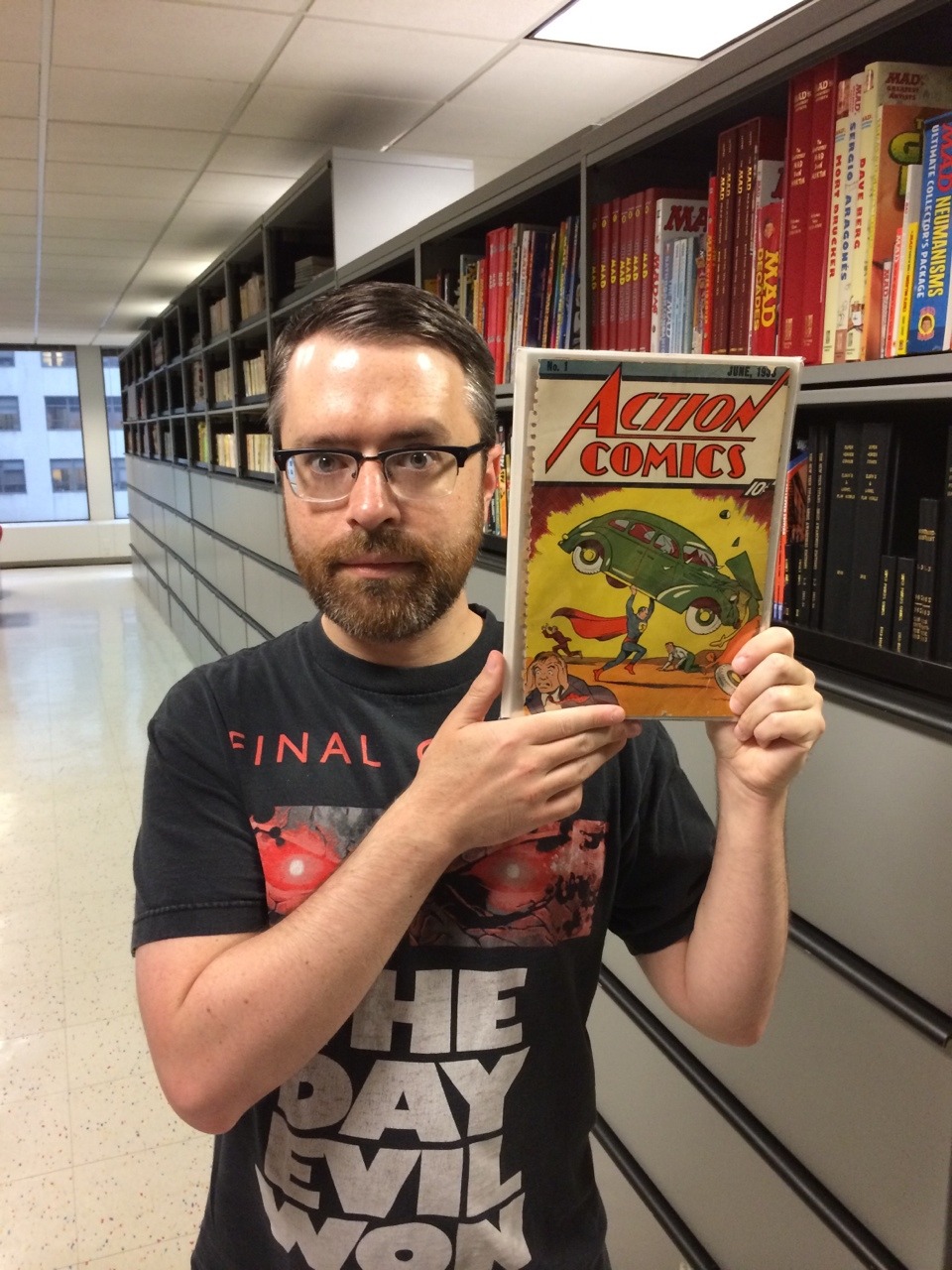
This happened.
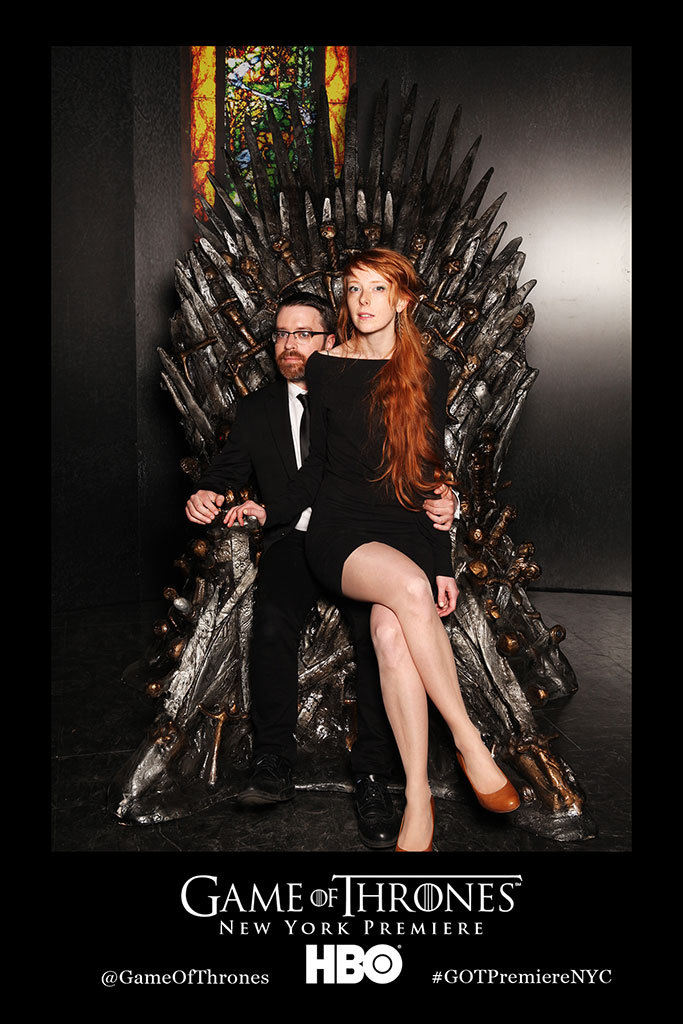
This and this happened.
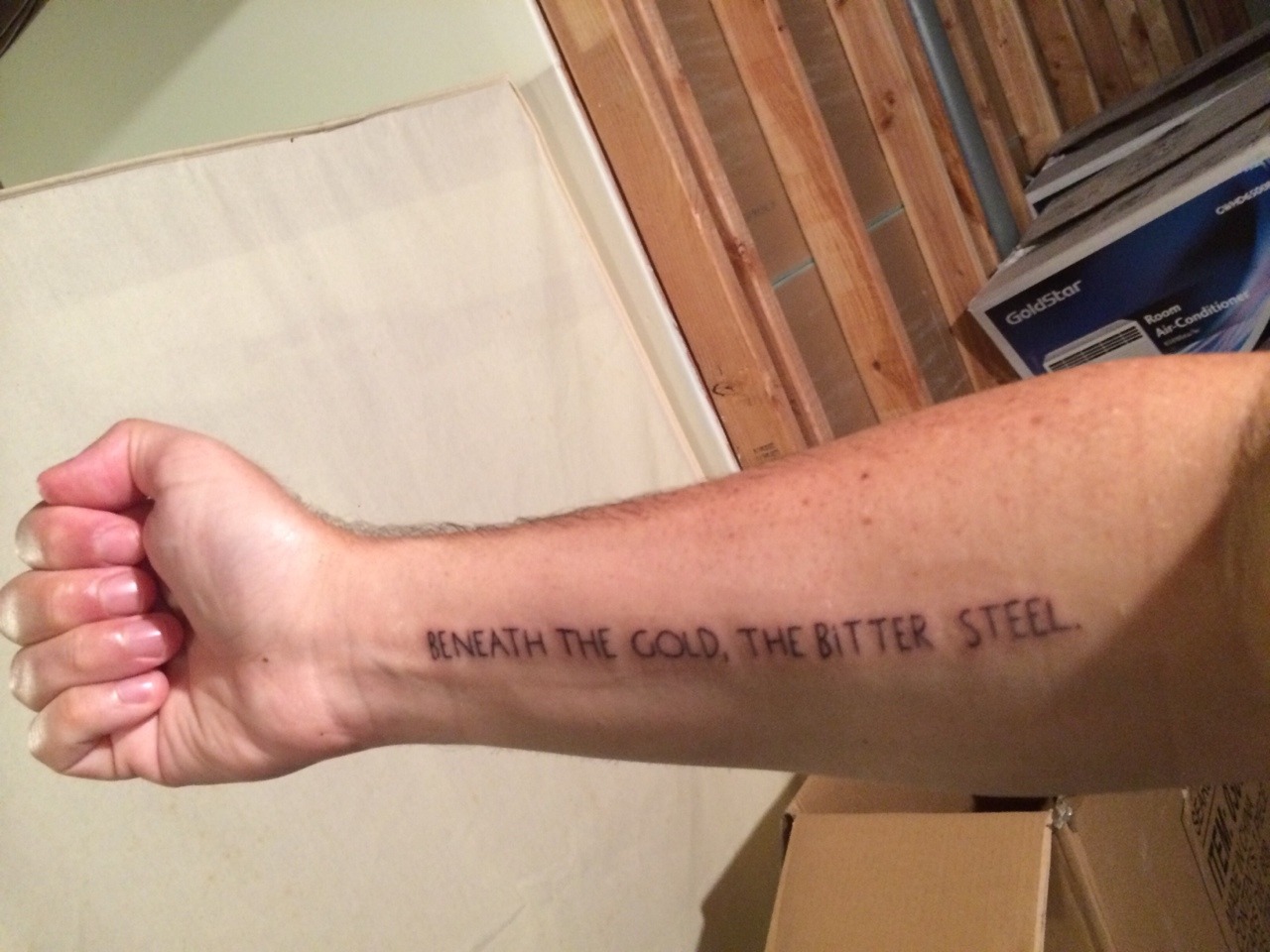
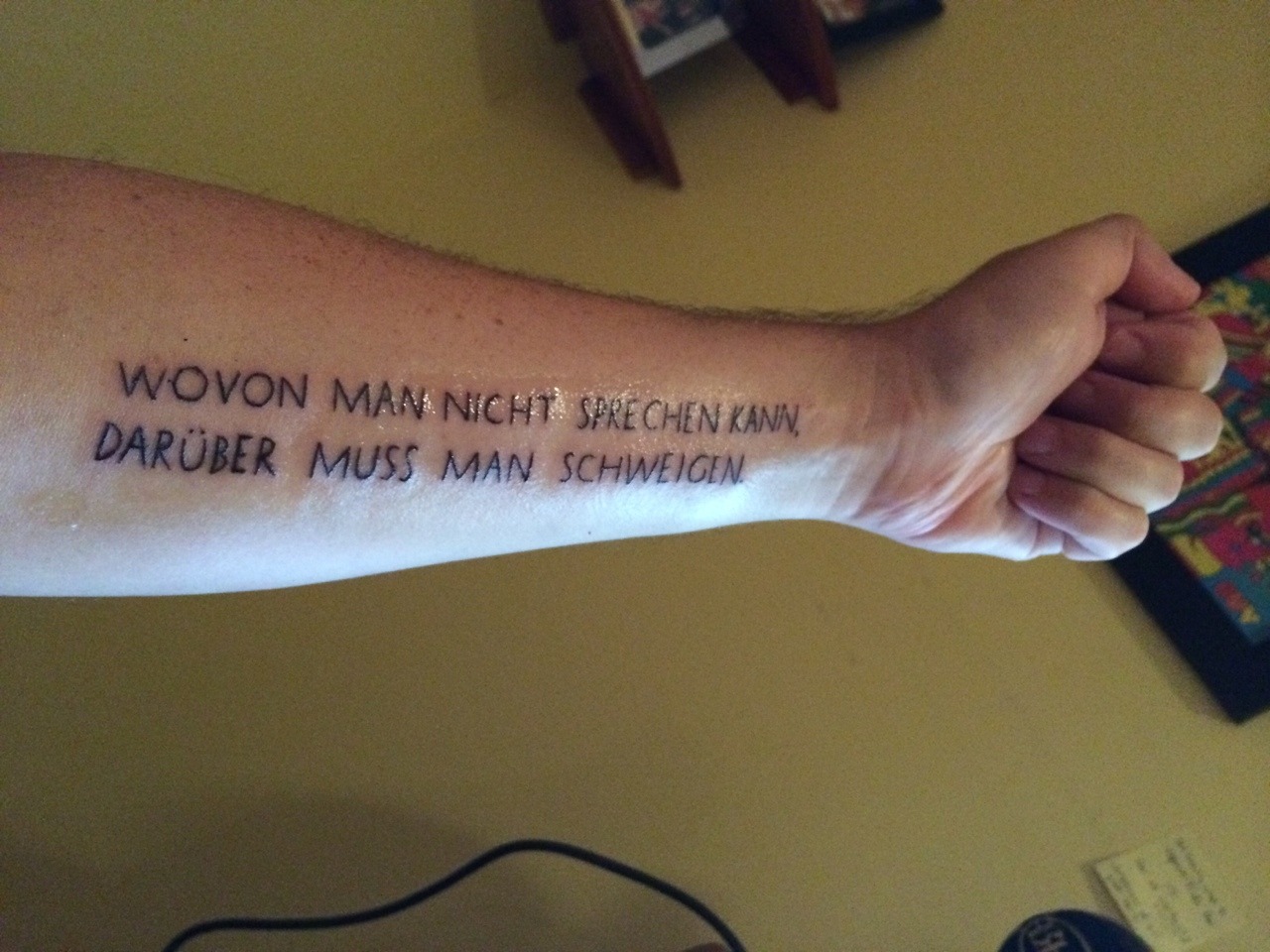
I spent the first full year of my life as a full-time freelance writer, I fell deeper in love with an astonishing woman, I helped parent a marvelous child.
See you next year.
On “objective criticism”
December 31, 2014dagsg asked: Do you have any opinion why, when some piece of art (e.g. GoT) might appear to be have dodgy or questionable elements (or changes in many cases) in closer inspection, modern fandoms almost always suspect malevolence behind it? Instead of explaining it with usually more plausible ignorance and/or stupidity (which also might sound a bit harsh in some cases).
I’ve written about this before, I know, and I’m sure more articulately than I’m about to, but: In contemporary criticism of art, both professional and fandom-based, several prevalent approaches that on the surface appear to have little in common are all methods of doing the same thing, which is turning the evaluation of the work, which in the case of both the evaluation and the work is something inherently subjective and complex and capable of containing multiple contradictory messages and meanings, into something objective and simple.
“Purists” turn to fidelity to the source material. “Social justice warriors,” whether that term is being externally applied as a pejorative or self-applied as a tongue-in-cheek but proud descriptor of priorities (and I would consider myself the latter; it’s one of the reasons I started this tumblr years ago and started writing about this material in this way), as well as their reactionary opponents, apply sociopolitical metrics. Theory-mongers focus on “solving” art by teasing out clues and connections to unearth hidden truths or predict a work’s conclusion. Stans, shippers, even the “bad fans” of antiheroic characters so frequently lamented by film and TV critics who find them in the comment threads and twitter exchanges resulting from their reviews, prioritize the treatment of their favorite characters and relationships.
But in each case, the end result is a way to feel fairly to totally confident that art can be right or wrong; that the artists who make it, to speak to your question directly, can be right or wrong and condemned or praised; and that you, as a critic, can be right or wrong about that art and that artist in turn. Each approach has its legitimate benefits — in particular I believe that politics are a part of all art and MUST be addressed and considered — but each approach is ultimately reductive and contrary to what I understand art and criticism to be if no further steps to interrogate the work and one’s feelings about it are taken. Art is big and messy. Making it, consuming it, writing about it — these are inherently risky propositions. The risk should be embraced if we are to do anything worthwhile.
“The Comeback” thoughts, Season Two, Episode Eight: “Valerie Gets What She Really Wants”
December 29, 2014“In science, the term observer effect refers to changes that the act of observation will make on a phenomenon being observed.”—“Observer effect (physics),” Wikipedia
It took a solid minute, at one point, for my brain to catch up with The Comeback last night, for the observer to understand the observed. It wasn’t Valerie Cherish’s superstar costar Juna’s confession of hurt feelings or her other superstar costar Chris’s profession of lust that did it. It wasn’t blood flowing from her best friend Mickey’s nose or shit gushing from Valerie’s pipes. It wasn’t the red carpet or the Emmys themselves. It was the almost physically disorienting sight of Valerie Cherish, off-camera.
When Valerie flees the award ceremony in a frantic attempt to contact her estranged husband Mark about Mickey’s rapidly deteriorating health, she leaves Jane’s camera crew behind. By rights, that should be the end of the episode right there. Everything we’ve seen during both seasons of The Comeback, after all, has technically been footage shot for one of its many shows-within-a-show: I’m It, Room and Bored, The Comeback, Seeing Red, The Assassination of Valerie Cherish, The Talk, Tonight Show, even The Real Housewives of Beverly Hills. But when Valerie passes through the doors of the auditorium and out of the sight of the camera eye, there’s no Sopranos-style crash cut to black. Valerie’s still there, bathed in the warmth of film instead of the handheld coldness of digital. Suddenly, given the limitations imposed on every single shot in the series so far, we’re seeing something that should be impossible to see. The reality show is over—this is real.
The Comeback has never shied away from metacommentary, duh, but this is some next-level, Dorothy stepping into a Technicolor dreamworld and realizing she’s not in Kansas anymore shit, a use of the medium itself to convey the message. In a way, it’s also an internal callback to the loathsome drug-dream fantasy sequences central to Seeing Red, writer Pauly G.’s clumsy attempt to articulate his emotional reality by cutting away from reality-reality. But it reminded me of nothing so much as the marvelous magic-realist ending of Hal Ashby’s Being There: Lisa Kudrow’s Valerie Cherish standing in for Peter Sellers’s Chauncey Gardener, umbrella in hand, striding through the water and doing the impossible. To say it was the single strongest moment in a TV comedy in 2014 would be to imply anything else even came close.
And yet. Something about “Valerie Gets What She Really Wants,” the finale for The Comeback’s second season and, I assume, The Comeback period, struck me as less than magical: To get what she really wants, Valerie makes a sacrifice no one else is asked to make.
I reviewed the season finale of The Comeback for the New York Observer. I had very mixed feelings!
“The Wire” Wednesdays, Part Three: “We Ain’t Back in the Day”
December 24, 2014By the time the opening credits finish rolling on the The Wire’s second season premiere, you’re watching a different show than you were when the closing credits finished rolling on the first season finale. Jimmy McNulty, system-bucking enemy-making super-detective, has been reduced to riding a boat in the Marine Unit, but that sorry spectacle is only the tip of the proverbial iceberg. For one thing, there’s actual ice to contend with: The summer heat has been replaced by gray midwinter chil and clouds of frosted breath. The plummeting temperature feels reflected in the credits themselves: The Blind Boys of Alabama’s rollicking roadhouse gospel version of “Way Down in the Hole” has been replaced by the delirium-tremens minimalism of Tom Waits’ art-rock original, and its second verse’s references to Satan (“he’s got the fire and the fury at his command”) are a damn sight more menacing than the swapped-in third verse present during Season One, with its uplifting praise of “Jesus’ mighty sword.” And while the imagery is still a montage of tight close-ups on transactional hand gestures and inscrutable electronic surveillance mechanisms, the jittery jump-cuts between them are largely phased out in favor of slower, cooler dissolves. And we haven’t even touched the radically different waterside setting for much of that imagery — or the whole new set of cast names slapped atop it. The post-credits epigraph, from a bit character called Little Big Roy, sums it up: Whatever The Wire is now, “Ain’t never gonna be what it was.”
It turns out that it was literally impossible to understand the nature The Wire until its second season. It wasn’t until then, when it left the West Side projects behind to head for the docks and introduce a whole new cast of criminals and civilians with blue collars and white skin, that it truly became itself. That’s different from shows that simply got sharper, even dramatically so, as they went along — the example everyone points to for this kind of thing is “College,” the landmark fifth episode of The Sopranos’ first season, which juxtaposed Tony’s family life and Family life with unsparing clarity as he stalked and murdered an informant while on a road trip with his college-bound daughter. As I’ve said before, The Wire, by contrast, had its tone and pacing down pat in the pilot. What it didn’t have — what it couldn’t have, until it did an entire season’s worth of establishing itself in one particular setting — was the unprecedented shifting and widening of scope that would come to characterize it from season to season.
Celebrate this festive season with my review of the first six episodes of The Wire Season Two for my weekly column in the New York Observer, The Wire Wednesdays. Santa Sobotka is coming to town.
Critics’ Quarrel: Debating the End of “The Affair”
December 22, 2014My love for The Affair is passionate and tempestuous and closely guarded, an embarrassingly thematically-appropriate way to love The Affair. It’s the show I’m most likely to tweet about rhapsodically at two in the morning after a few drinks, marveling at its sharp sexiness and sophistication as if I’m impetuously blurting out a secret to my fellow night-owls and barflies. These tweets are often shot through with bafflement and contempt for the show’s detractors: Why, goddammit why, does no one love The Affair like I do?Don’t they know how good they could have it? I feel like I’ve discovered the best thing in the world and it’s a thing only I can see.
Which is an exaggeration, of course, but only slightly. Even many of the show’s initial, vocal supporters appear to have cooled on the bifurcated saga of Noah Holloway and Alison Lockhart; on HitFix’s annual critics’ poll it ranked a lowly 24th, below such scintillating fare as The Walking Dead, Gotham, and season four of Homeland. At moments like this, I worry that TV criticism’s sensible refusal to conflate “serious” with good may have become a reflexive zeal to conflate “serious” with “bad.”
But the worry is slight compared to my deep, deep delight in the show itself, which is one of the best on television. It’s just so smart, and so specific, about so many things that are hard for TV to do without getting all, you know, teevee about them.
The season finale of The Affair aired last night, so me and my fellow critic Eric Thurm got all he-said/he-said about it and debated the show for the New York Observer.
The season finale of HuffPost Live
December 22, 2014I talked about the season finales of Homeland and The Affair and the penultimate episode of The Comeback on HuffPost Live’s Spoiler Alert show today. Watch it here!
“The Comeback” thoughts, Season Two, Episode Seven: “Valerie Faces the Critics”
December 22, 2014…that’s the thing about Valerie that separates her from the Larry Davids and David Brents of the world: People care about her, and she cares about them in return. Think back to how much the cast of Room and Bored, especially Juna, liked her back in Season One, and how she went to bat for them too. Look at Mickey or Esperanza, employees whose affection for Valerie is totally genuine. Even her nemeses respect her on some level: Jane’s dead-eyed “anything for the story” careerism often dissolves when confronted with some display of confidence or vulnerability on Valerie’s part. And the elevator scene at the end of the episode is the strongest evidence yet that Paulie G. recognizes how lucky he is to have landed Valerie for a project that otherwise would have floundered, and how easy she can be to talk to if he just lets it happen.
Valerie Cherish is much more than just the sitcom-structure equivalent of a Christmas tree, on which you can hang funny scenes like ornaments. (Though there were plenty of those this week: Mickey’s all-nude revue, the dead-on parade of new-media stereotypes at Val’s junket, Val having enough chutzpah to work the audience on The Talk and bust Jane’s chops with off-color jokes back home.) She’s as close as this kind of comedy has ever gotten to a real character, existing not just as a joke-delivery mechanism but as a person whose behavior has lasting moral and emotional consequences on herself and the people she loves. It hurts when love breaks down.
I reviewed last night’s very strong episode of The Comeback for the New York Observer.
The Horror of Adult Swim
December 19, 2014The most terrifying television show of 2014 debuted without fanfare at four in the morning the other day, and like the dead lady in The Shining’s Room 237, you had to pass through layers of comforting illusion to uncover the horror within.
Unedited Footage of a Bear starts out as just that: a static shot of a big brown bear, soundtracked by the cameraman’s whispered enthusiasm about the critter’s size (and, for some reason, his ears). After thirty unassuming seconds, an equally innocuous ad for what looks like a prescription allergy medication starts up, with all the usual tropes. A loving but harried mom in a bucolic suburban setting lives in an adenoidal fog, unable to attend to her plucky rugrats, until some pharmaceutical magic wipes away the haze. It’s soon clear this isn’t the real deal — the kids are too shrill, the mom too sickly, and the side effects too numerous for this to be anything but a parody. After all, this is Adult Swim, Cartoon Network’s nighttime block of largely bite-sized shows for adult audiences with the audiovisual munchies. Riffing on commercial culture is what they do.
But before you can say “Happy Fun Ball,” the music slowly fades out, the mother’s smile cracks and fades, the yellow police tape of a crime scene looms into view, and the nightmare begins. What follows is eight minutes of pure dread, involving menacing phone calls, crazed doppelgangers, terrified children, attempted vehicular homicide, an ear-splitting soundtrack, and the most harrowing portrayal of psychosis this side of Titicut Follies.
If that bait-and-switch sounds familiar, you’re likely one of the millions of people who caught Too Many Cooks fever a few weeks back. Like Unedited Footage and saccharine drug commercials, TMC took an overfamiliar airtime-filler, in this case the opening credits of a late-‘80s sitcom, and slowly skinned it alive. Lurking within the corny comedy is a machete-wielding killer who stalks his countless castmates through their credit sequences, and eventually remakes TMC’s tv-reality in his own dark image, as if his evil is strong enough to warp the videotape used to capture it.
Too Many Cooks became a viral sensation, and put Adult Swim’s “Infomercials” initiative — an entire series of satirical stand-alone short films by a variety of AS-associated writers and directors, all of them dropped on unsuspecting viewers in the small hours without so much as an official slot on the schedule — on the map. And it cut to the heart of one of TV’s strangest secrets: Adult Swim, Cartoon Network’s live-action stoner-comedy block, is making great horror on the regular.
Works cited: Twin Peaks, Marble Hornets, The Philosophy of Horror by Noël Carroll, Pim & Francie by Al Columbia, and Sam Peckinpah’s Salad Days.
Say Hello, Leah Wishnia!
December 19, 2014[LEAH WISHNIA:] I honestly don’t really think too much about how my own comic work fits into the over-arching canon of alternative comics and such. I’m just trying to do work that I enjoy and that others might appreciate as well. Although I like to think of my own comics style and vision as being unique, I don’t feel that it’s necessarily at odds with other alternative comics that are being produced and distributed right now—in fact, there’s quite a few contemporary cartoonists whose output of work I totally “get,” work that seems rooted in a similar place as my own.
Indeed, though, many of my comics have featured characters that act and react quite dramatically, a kind of exaggeration of some negative attributes I see in both myself and in others. I think there’s a lot of chaos and pain and greed present in our culture right now that often goes unnoticed or unaddressed, so I like to take those negative things and amplify them until they reach absurd proportions, beating people over the head with it all until someone takes notice.
The Best Comics of 2014
December 18, 2014“The Wire” Wednesdays, Part Two
December 17, 2014Towering, intimidating, with a voice like carved granite, Lieutenant Cedric Daniels is the (mostly) benevolent Darth Vader of the Baltimore Police Department, and in Season One’s back half he serves up a summary of the show as dualistic as the Force’s Light and Dark Sides. “The wire is what gives us Barksdale,” he tells Deputy Burrell when the half-stepping brass tries to shut it down. “It gives us the whole crew. Day by day. Piece by piece.” Orderly, methodical, unrelenting. But this is only after he offered a very different spin on the investigation to his wife. “You follow the drugs, you get a drug case,” he tells her. “You follow the money, you don’t know where you’re going.” Every new lead followed, every new piece of evidence gathered is a potential first step on a journey into the unknown. Or as Lester Freamon, the Obi-Wan of the Barksdale detail, more profanely puts it: “You follow drugs, you get drug addicts and drug dealers, but you start to follow the money, and you don’t know where the fuck it’s gonna take you.”
As below, so above. As The Wire’s first season builds to its anticlimax — McNulty, Daniels, Freamon and company bust Avon Barksdale and much of his gang, but on relatively penny-ante charges that leave his consigliere Stringer Bell free, and at the cost of lives and livelihoods on both sides — it repeatedly reveals surprising new depths. The crime and corruption are bigger, the cost sadder, the cops and criminals alike more complex than anyone had any reason to suspect. But it also functions exactly as a great cop show should, delivering top-notch genre-based suspense and barreling forward from plot point to plot point with the narrative inevitability of a freight train. It epitomizes the very form of storytelling it subverts.
I rewatched and reviewed the second half of The Wire Season One — which contains one of the greatest scenes in the history of television — for the New York Observer.
“The Comeback” thoughts, Season Two, Episode Six: “Valerie Cooks in the Desert”
December 16, 2014“You have arrived at your destination.”—Valerie’s GPS
“Have I?”—Valerie
Valerie Cherish got a rave review in The New York Times. The show she’s on, Seeing Red? Not so much. But still! “Valerie Cherish,” “rave review,” and “New York Times” were surely three phrases not even perpetually loyal Mickey ever expected to see in the same sentence, maybe not even on the same page. Yet there they are, sticking Valerie alongside the likes of Bryan Cranston and Claire Danes in the “‘90s network TV stars kicking ass on prestige cable dramas” club. It’s the kind of success she’d dreamed of for a decade—an actual, honest-to-god comeback. The question that “Valerie Cooks in the Desert,” last night’s episode, asks: “Now what?”
I reviewed this week’s typically great episode of The Comeback for the New York Observer.
HuffPost Living
December 15, 2014I’ll be talking about the Newsroom finale, The Comeback, The Affair, and Homeland on @huffpostlive at 5:30pm—tune in: http://huff.lv/1DhCjt6
“The Wire” Wednesdays, Part One: “We’re Building Something Here” (Season One, Episodes 1-6)
December 10, 2014The Wire returns to screens of all kinds in 16 days, but it never really went away. More than any other show from the New Golden Age of Television, it has remained a part of the conversation long after the last notes of its final musical montage played out, seven years ago this coming March. The Sopranos started it all, but the cultural currency of its genre — the mafia saga — ended with it. Deadwood was the Baltimore crime drama’s contemporary, and like The Wire it mapped the intersection of criminality and community, but its truncated run, designed to lead to a fourth season that never saw the light of day, leaves it as much of a question mark as an exclamation point. Sex and the City eventually got the props it deserves as a forerunner for idiosyncratic cable programming, but its status as a sitcom, its fixation on status symbols, and, sadly, the gender of the characters doing the fixating preserve its marginalization. But this Baltimore cops-and-crooks drama — with its go-for-broke serialized storytelling, its prescient placement of American political problems at its structural center, its cross-cultural cast, and its endlessly quotable writing — has only increased in both praise and prominence since its initial six-year, five-season run, during which it was already being hailed as the greatest television show ever to air. HBO may have remastered it for its HD rerelease on December 26, but that’s simply technology catching up to the minds of the viewing public, where it’s been high definition and state of the art all along.
I’m very proud to present The Wire Wednesdays, a new weekly column for the New York Observer in which I’ll be rewatching and reviewing the show. The plan is to cover half a season at a time, so this installment covers Season One, Episodes 1-6. I have complicated opinions about this complicated show and it’s a great pleasure to be able to write about it at length.
“The Comeback” thoughts, Season Two, Episode Five: “Valerie Is Taken Seriously”
December 10, 2014Sitcoms are boring to look at. You ever think about that? How one of only two fictional-entertainment teams on TV throws the visual game before it even reaches the playing field? You get sitcoms that are cleverly edited, sure, where the comic timing depends on the cuts; Arrested Development takes top honors here.. You get sitcoms that do convincing pastiches of other genres of TV (Community), or of the documentary/reality format (too many to list, but you’re reading about one right now). And if you look down memory lane you can find shows that had a visual tone that made them memorable and unmistakable, like the Gordon Willis golds and browns of the bar set in Cheers. But in much the same way that mainstream movie comedy appears content to leave “I dunno gang, maybe we should make the thing look good too” in the hands of the Coen Brothers, the situation comedy has pretty much tossed the visual-innovation baton to Adult Swim and called it a race.
Bless its black heart: The Comeback tries harder. “Valerie Is Taken Seriously,” last night’s killer episode (a welcome return to form after last week’s suicidal one), has the mockumentary thing down cold. It also nails not one but two genre spoofs: the grim’n’gritty, dimly lit world of HBO dramas, and the day-glo gibberish of children’s television. (As the father of a three year old, I assure you that far greater horrors than Nicky Nicky Nack Nack lurk in the kids’ section of channel guide.) It could easily have coasted. Instead, it staged its two lynchpin scenes — Valerie’s transformation into a literal monster via green screen, and her eye-opening conversation about her performance with the New York Times reporter — to look as memorable as they felt.
I reviewed this week’s excellent episode of The Comeback for the New York Observer/comedies are boring-looking most of the time for some reason.
NEWSROOMAGEDDON
December 8, 2014I’ll be talking about last night’s execrable episode of The Newsroom (as well as Homeland, which was also very bad, and The Comeback, which was very good) on HuffPost Live’s Spoiler Alert at 4:30pm. Tune in here!
“The Comeback” thoughts, Season Two, Episode Four: “Valerie Saves the Show”
December 2, 2014It’s an irony literally no character on the show possesses the self-awareness required to appreciate, but here it is: It took an act of literal self-destruction for a show about the slow-motion, largely self-inflicted crushing of a human spirit to hit a serious wall.
Not that death should be off limits for The Comeback, or for any other cringe comedy. Untimely demises have been a part of the genre going back to Spinal Tap’s countless dead drummers. (“The official explanation was he choked on vomit….Well, they can’t really prove whose vomit it was.” “You can’t really dust for vomit.”) The Comeback’s own HBO antecedent, Curb Your Enthusiasm, went to the mortality well most memorably when Larry David’s dad told him he hadn’t been informed of his own mother’s funeral because “she told me not to bother you.” Both of the examples illustrate the central conceit of their respective stories: Spinal Tap chronicles a world of moronic debauchery, while Curb obsesses over the millions of minute rules that govern human interaction. So if a drummer is murdered by puke in the former, or a son misses his mom’s funeral because his dad didn’t want to impose in the latter, the pieces fit.
But the suicide that serves as a climax for “Valerie Saves the Show” is a hearse of a different color.
I reviewed this week’s episode of The Comeback for the New York Observer.
On the Star Wars trailer, because someone asked
December 1, 2014I find the idea of Star Wars without George Lucas singularly unappealing, even troubling. Turning Star Wars into a depersonalized, committee-driven content factory divorced from its creator in perpetuity, like the major superhero franchises, is a tremendous regression in any number of ways. Whatever his faults, Lucas is a real filmmaker, and these were his original ideas. J.J. Abrams, by contrast, is a facilitator, a babysitter for the ideas of others —Mission: Impossible, Star Trek, Star Wars, the Spielberg gestalt (Super 8). His involvement with Lost was minimal — the germinative idea was brought to him by the network, and other than his admittedly fine work co-writing and directing the excellent pilot, 95% of that show, good bad and ugly, was Damon Lindelof and Carlton Cuse. Alias is a sexy female spy series. Honestly, his greatest claim to originality is Felicity. In other words, he is Hollywood’s first “auteur” in the mold of the countless superhero-comics writers and artists who’ve been content to labor with the tools made for them by actual visionaries decades ago, spending entire careers creating nothing new, ideal employees for a system that has wholly conflated art and product. Moreover, his visual style is capable of being parodied in its entirety with a five-second montage of a shaky-cam shot and lens flare. That he’s apparently pouring Star Wars into his bog-standard garden-variety postmillennial action-blockbuster directorial mold (shaky-cam stormtroopers) instead of adjusting for the material is crass and sad. I’m sure the movies will have entertaining moments performed by state-of-the-art special effects technicians and likeable, talented actors, and have all the soul, guts, and idiosyncracy of a superhero movie, which is to say none at all.
Also the lightsaber makes no sense. “Check out my sword. It’s extra good because it has two little swords sticking out from the hilt of the big sword, in case I need to stab someone standing immediately to my right. Or to my left, even — the possibilities are endless, really.”
The HuffRoom
December 1, 2014I’ll be talking The Newsroom, The Comeback, The Walking Dead, and the best shows for a holiday-break binge on HuffPost Live’s Spoiler Alert today at 5:05pm. Tune in here!

